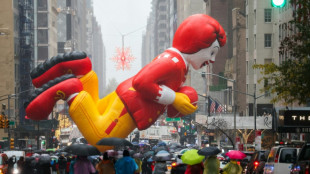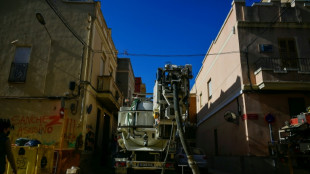

Cathay Airbus engine fire linked to cleaning: EU regulator
A cleaning process leading to fuel hose degradation during refurbishment may have caused a recent Airbus A350 engine fire that triggered dozens of Cathay Pacific flight cancellations this month, the EU aviation regulator said Thursday.
The European Union Aviation Safety Agency (EASA) also said it had widened the number of engine variants potentially affected by the suspected defect, which include Rolls-Royce engines powering A350-900s and A350-1000s.
Hong Kong-based Cathay briefly grounded its fleet of A350s for inspections and repairs after a Zurich-bound plane was forced to head back to the Chinese city on September 2.
Inspections found that components on 15 of the 48 planes in the fleet of A350s, powered by engines from the British manufacturer Rolls-Royce, had to be replaced.
The results of a Hong Kong probe released Thursday said the Zurich-bound plane's engine defect could have escalated into "extensive damage".
A post-flight examination found that a fuel hose had ruptured, as evidenced by a "discernible hole", burn marks and "black soot observed on the aft section of the core engine", the investigators said.
The fuel could have leaked through the ruptured hose and resulted in a fire that would have spread to surrounding areas, said the report released by the Air Accident Investigation Authority (AAIA).
"If not promptly detected and addressed, this situation... could escalate into a more serious engine fire, potentially causing extensive damage to the aircraft," it said, categorising the incident as "serious".
Five additional fuel hoses in the Zurich-bound plane -- which was manufactured in 2019 -- were also found to have either "frayed metal braids or collapsed structures", the authority said.
The AAIA recommended that the EASA require Rolls-Royce to "develop continuing airworthiness information, including but not limited to, inspection requirements of the secondary fuel manifold hoses" of the engines in question.
In its report, Hong Kong investigators said the Cathay flight crew saw an engine fire warning for the number two engine shortly after liftoff.
The crew declared an emergency "mayday" signal but later downgraded it to a call indicating an urgent situation.
The fire warning was cleared after 59 seconds, as the crew shut down the engine and used a fire extinguisher.
Thursday's preliminary report "should be regarded as tentative", a spokesman said.
- 'Precautionary measure' -
The Zurich-bound Cathay plane that was forced to return to Hong Kong was an A350-1000 model, the AAIA report said.
The Cathay incident prompted other airlines in Asia to carry out similar checks on their A350-900 and A350-1000 models, which are powered by Rolls-Royce Trent XWB-84 and XWB-97 engines.
The EASA also mandated inspections on A350-1000s as a "precautionary measure", noting that there are 86 such aircraft in service worldwide.
However, it said mandatory inspections of Airbus A350-900 engines were "not warranted at this stage".
Rolls-Royce said Thursday that it was continuing to work closely with regulators to support the ongoing investigation.
"The engine and aircraft system promptly detected and addressed the issue, as expected with such an incident," a spokesperson said.
Cathay said in a statement that it is "in full compliance with the EASA Emergency Airworthiness Directive" referenced in the Hong Kong investigators' report.
The airline "continues to work closely with the airframe and engine manufacturers and regulator," it added.
Qatar Airways is the biggest operator of the A350-1000, with 24 in its fleet, followed by Cathay Pacific and British Airways, which both have 18.
Airbus declined to comment on the AAIA report, while the EASA have not responded to AFP's requests for comment.
Last November, Emirates chief executive Tim Clark expressed concerns about the durability and longevity of A350 engines.
Rolls-Royce has defended its Trent XWB-97 engines and said it is taking steps to improve their durability.
A.Meyer--MP




